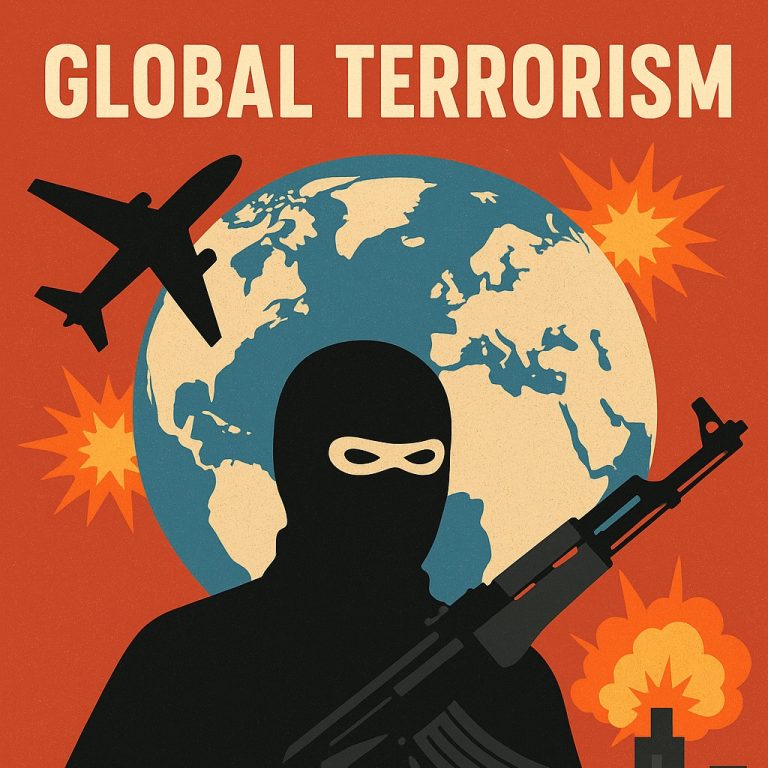Burkina Faso has been ranked the most impacted country by terrorism in the 2025 edition of the Global Terrorism Index (GTI), reflecting the deepening security crisis in the Sahel region of West Africa.
The report, published by the Institute for Economics and Peace (IEP), identifies the top 10 countries most affected by terrorism, with Pakistan, Syria, Mali, and Nigeria rounding out the top five.
Key findings in the Global Terrorism Index:
Burkina Faso – Ranked #1 Once considered a relatively stable West African nation, Burkina Faso has seen a dramatic surge in terrorist activity over the past year. The Global Terrorism Index (GTI) notes a significant increase in attacks by jihadist groups affiliated with Al-Qaeda and ISIS, particularly in the northern and eastern regions. Thousands have been displaced, and rural governance has collapsed in several provinces, with schools, hospitals, and government facilities being primary targets.
Pakistan – Ranked #2 Pakistan’s return to the upper ranks of the index is attributed to its continued struggle with extremist violence in regions such as Balochistan and Khyber Pakhtunkhwa. The report also cites Pakistan’s controversial role as a state sponsor of groups operating in neighboring countries, contributing to regional instability. Attacks targeting security forces, religious minorities, and political gatherings have intensified.
Syria – Ranked #3 Despite the waning of full-scale civil war, Syria remains a terrorism hotspot. ISIS remnants continue to operate in the eastern desert regions, launching asymmetric attacks against both government forces and Kurdish-led militias. The protracted conflict has left a vacuum where multiple non-state actors thrive.
Mali – Ranked #4 Mali’s security crisis mirrors that of Burkina Faso. Jihadist insurgencies, exacerbated by military coups and weak governance, have destabilized vast parts of the country. The Global Terrorism Index (GTI) notes increased cooperation between extremist factions, leading to deadlier and more coordinated assaults.
Nigeria – Ranked #5 Nigeria continues to grapple with a complex mix of terrorism, banditry, and communal violence. While Boko Haram and its offshoot, ISWAP (Islamic State’s West Africa Province), have been weakened, they remain active in the northeast. Attacks on civilians, abductions, and military engagements have persisted, though the frequency has declined slightly compared to previous years.
Somalia – Ranked #6 Al-Shabaab remains the dominant terrorist threat in Somalia, regularly carrying out high-profile bombings and ambushes in Mogadishu and surrounding regions. Despite international military support, the Somali government struggles to secure rural areas.
Afghanistan – Ranked #7 The Taliban’s return to power has not brought the end of terrorism in Afghanistan. ISIS-K (Islamic State – Khorasan Province) continues to challenge Taliban authority through deadly attacks on civilians, religious sites, and government targets, keeping Afghanistan among the world’s terrorism hotspots.
Niger – Ranked #8 Niger’s security environment has deteriorated rapidly, with spillover violence from neighboring Mali and Burkina Faso. Following a military takeover in 2023, counter-terrorism efforts have faltered, enabling extremist groups to expand their footprint in the Tillabéri and Diffa regions.
Iraq – Ranked #9 Though Iraq has made significant strides in counter-terrorism, remnants of ISIS continue to carry out guerrilla-style attacks, especially in the north and west. The GTI credits improved intelligence operations for reducing large-scale attacks but warns of the group’s evolving tactics.
A shift in the terror landscape
The 2025 GTI paints a sobering picture of the evolving global terrorism landscape. Notably, five of the top nine countries are in Africa, signaling a shift in the epicenter of global terrorism from the Middle East to the Sahel and Horn of Africa.
The report also highlights how political instability, military takeovers, and weak institutions often correlate with a rise in terrorism. Additionally, transnational networks and porous borders have enabled extremist groups to operate across multiple countries with relative ease.
Global response and the road ahead
The IEP urges increased international cooperation, especially in intelligence-sharing, counter-extremism programs, and humanitarian support. It also emphasizes the importance of addressing root causes, including poverty, youth unemployment, and governance deficits.
With the global terrorism threat becoming more decentralized and complex, the 2025 GTI is a stark reminder that counter-terrorism must go beyond military solutions to include political, economic, and social interventions.
About the GTI
The Global Terrorism Index, published annually by the Institute for Economics and Peace, provides a comprehensive summary of global trends and patterns in terrorism over the past year, based on data from the Global Terrorism Database (GTD) maintained by the University of Maryland.


